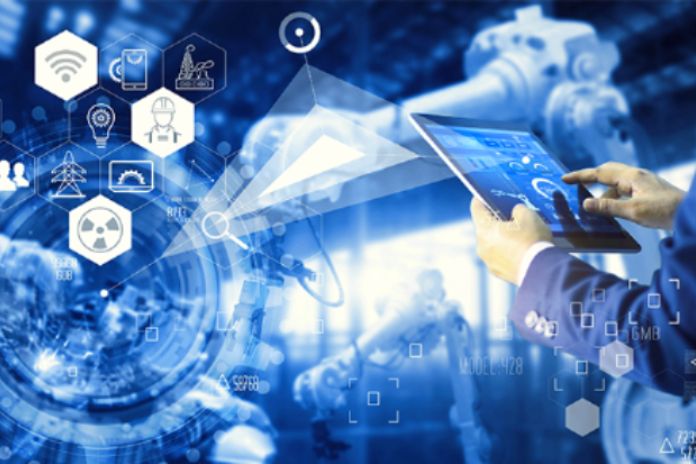IoT and IIoT: The fourth industrial revolution transformed how businesses, governments, and humans interact with the rest of the connected world.
This also applies to factories that implement technologies such as IoT to improve operational efficiency. Despite being similar, there are IOT x IIOT differences.
As the technology is still settling in, the standards are still being set. However, industries are already starting to worry about acceptance, cost, connectivity, security, and much more, creating the necessary structures for Smart Factories.
What Is IoT?
The Internet of Things (IoT) consists of a system of objects connected through the internet, collecting and transferring data over a wireless network without human intervention.
This technology opens up many possibilities in business and daily life. Any object equipped with sensors capable of connecting to the internet can be part of the system. We’re talking about medical equipment, biochips, solar panels, and autonomous cars, among billions of other physical devices.
Thanks to the cheapness of electronic microprocessors and the almost complete coverage of wireless networks, anything can be turned into a part of the IoT. This real-time, autonomous data communication is making the fabric of the world around us more innovative and agile.
Today, companies look to IoT to increase revenue, reduce operating costs and improve efficiency. Implementing IOT devices makes it possible to optimize workflows, visualize user patterns, automate processes, and increase competitiveness.
Despite using this technology as a tool, its general and specific applications often need clarification. However, there are IOT x IIOT differences.
What Is IIOT?
The Industrial Internet of Things (IIOT) uses intelligent sensors and actuators to improve industrial and manufacturing processes. It uses this equipment to perform real-time analyses, taking advantage of the data collected in the industrial environment.
The Industrial Internet of Things is a network of devices connected to form systems that monitor, collect, exchange, and analyze data. This is done through artificial intelligence. This critical information is used to guide faster and more accurate business decision-making.
Connected sensors and actuators allow companies to detect inefficiencies and issues faster and save time and money while supporting business intelligence actions.
IIOT can improve quality control, sustainable practices, supply chain traceability, and overall supply chain efficiency in manufacturing.
IIOT in an Industry 4.0 environment is excellent for predictive maintenance, enhanced field service, resource management, and asset tracking.
The industrial ecosystem with the deployment of IIOT works with elements other than intelligent devices. Using a communication infrastructure and data storage in the cloud (Big Data), software for managing and analyzing raw data, and people to supervise processes is necessary.
The devices transmit the information to the communication and storage infrastructure, and the software analyzes this data defining what action should be taken. Often this process is supervised by an operator.
Numerous industries make use of IIOT. An example is the automotive industry, which uses IIOT devices as autonomous robots. IIOT helps maintain these systems proactively, identifying potential issues before they disrupt production and reducing downtime.
The agricultural industry also makes extensive use of IOT devices. Industrial sensors collect data on environmental conditions, soil nutrients, and more, allowing farmers to produce an optimal crop.
Another example is also the oil and gas industry. Some oil companies maintain a fleet of autonomous drones that can use visual and thermal imaging to detect potential pipeline problems. This information is combined with data from other types of sensors to ensure safe operations.
As this is all very similar to standard IoT, it is common to need clarification on the two. However, let’s show the IOT x IIOT differences.
What Are The Differences Between IOT And IIOT?
In principle, IOT and IIOT work the same way. Both concepts have the same core character of availability, intelligent and connected devices. But there are IOT x IIOT differences.
The main difference between the two is their general uses. IoT makes consumers’ lives more convenient and accessible, while IIOT is used for industrial purposes such as manufacturing, supply chain monitoring, and management systems.
In this way, IoT is B2C (business-to-consumer), and IIOT is B2B (business-to-business), which is one of the significant differences between IOT x IIOT.
Therefore, another of the IOT x IIOT differences is the degree of application. The IIOT is designed to handle industrial machinery and uses more sensitive and accurate sensors, including more sophisticated control technologies and advanced analytics.
In contrast, IOT uses simpler technological devices with low-risk impact. Therefore, IOT equipment also has a lower price, considering its production volume and technology resources.
Still, in this sense, the areas of interest are different. IIOT is aimed at machines and sensors used in high-risk activities and industrial automation, such as aerospace engineering, health, and energy. Any failure in these systems could result in life-threatening or other emergencies.
On the other hand, IoT is used in devices that generally do not pose a risk to the consumer when a failure occurs. They create situations of convenience where the main concern is the user experience. This is one of the clearest IOT vs. IIOT differences.
Also Read: What Is Computational IoT, And What Are The Benefits Of IIoT?

